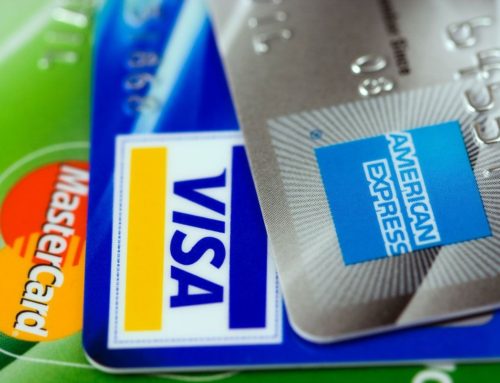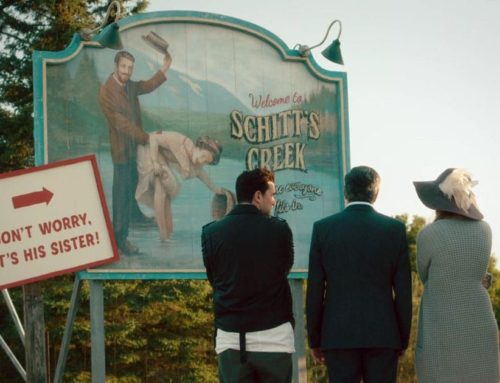A guest blog post by Adam Schumaker.
Every opportunity-driven composer has probably been on www.composerssite.com. It is a wonderful resource for finding competitions, call-for-scores, residencies–any opportunity we composers believe we need to succeed. The American Composers Forum also has the best curated opportunities a composer could ask for. Every composer who has ever applied to a competition has also experienced the hope of winning, and more likely, the sinking feeling as you read the rejection email that you and the other 99% of the applicants received. Yes, you should still apply for competitions and call-for-scores when you can. Even Eric Whitacre says you should. But there is another way we should be seeking opportunity and cultivating ourselves:
GO FUND YOURSELF!
What do I mean by this? Take a multi-faceted approach to creating your own opportunities through a diverse and steady leveraging of personal networks, cold calls or emails, local and national grants, institutional support, crowdfunding (if applicable), and collaborations. Be loud, be heard, and don’t let a few “nos” hold you back. This approach to making your own performance, event, or recording happen is more entrepreneurial than the job-seeking approach of applying to silent panels making somewhat arbitrary aesthetic decisions.
By choosing to fund your own projects, you take the driver’s seat, taking control of your future success.
By choosing to fund your own projects, you take the driver’s seat, taking control of your future success.
Before we walk through a brainstorm of potential funding sources and plans, let’s talk about scale.
Scale To Where You Are At
I am a composer, and I have yet to write a work as large as a symphony. Instead of aiming for something gigantic, with little potential to be performed, I get more enjoyment from writing solo and chamber works to hone my skills. I know that my current network and trajectory is not large enough to support the performance of a symphonic work. I do know that I can get chamber works performed by my network, or funded through grants and community support. Knowing what you are capable of accomplishing on a scale that aligns with what you have done previously, and where you want to go next (your trajectory), is the key to successful project planning. If you have big dreams, keep them, but break them down into smaller, more attainable projects; these will lay the groundwork for your future goals.
Instead of aiming for something gigantic, with little potential to be performed, I get more enjoyment from writing solo and chamber works to hone my skills.
Sometimes scaling is a practical decision. If I want to apply for a grant, or book a gig, I usually need a video recording with great audio. If I don’t have multiple examples of my work readily accessible in a recorded format, my first project should be getting a decent recording of a small collection of output, so networking and cold calling becomes easier. This brings me to my first place of funding: leveraging your network.
Leverage Your Network
Meet people and be deeply interested with them. Go to concerts and meet the performers, the composers, the organizers, the audience. Meet people on Twitter or Facebook, especially the ones you met in person. Follow each other’s work. Go to their concerts or catch their livestreams. Find places where your aesthetics align. Then, most importantly, seek opportunities to make art together. Do this by creating opportunities for each other and inviting others in when it goes well!
Meet people and be deeply interested with them. Go to concerts and meet the performers, the composers, the organizers, the audience.
I have witnessed the over-funding of an album of new music, led by mezzo-soprano Megan Ihnen, born from a Twitter conversation. I have watched conversations turn into paid commissions. Just this year, I have had a series of “nos” turn into a very interesting and fruitful collaboration.
In the last three years, my own music has been performed by amazing musicians through leveraging my network, combining resources, and collaborating deeply and artistically. I have been able to get my concerts filmed with a multi-camera set-up and streamed live at no cost thanks to my network of colleagues, and by seeking collaborations with other organizations.
Collaborations look great on grant applications. When it’s apparent that people/organizations want to work with you, people/organizations find it easier to give money and other resources to you and your project. Sometimes partners can pool financial resources to have a larger amount to work with. More importantly, collaborators deepen the potential of the project.
A big part of collaborating is karma-driven. Don’t simply seek support for you and your efforts; do so in a way that benefits you and others. Find as many opportunities to give back and get involved in other’s’ work. On the flip side, don’t be afraid to pull people into your music by asking for their help and support. Amanda Palmer has an incredible TED Talk titled “The Art of Asking”. It is a beautiful thirteen minutes reminding us how to properly network, how to draw people in, and how to give back. Please watch it before you start seeking help.
In-Kind
If you are unfamiliar with in-kind donations, this is a term that comes from the nonprofit world that is defined as “goods or services” donated, instead of financial support. I love coffee, and at my concerts I always ask a local coffee roaster to donate a bag for a reception. The roaster doesn’t mind the exposure, my guests love the treat, and it’s not something I have to use my limited budget to purchase. In-kind can come in many forms, including: video recording, audio recording, venue rental, and rehearsal space. Find out what skills and resources you and your collaborators have, and divide and conquer, then leverage your networks to find more opportunities to collaborate with businesses on in-kind or discounted services.
Institutional Funding, Cold Calls, and Negotiations
Part of raising your own money for your concert is simply seeking out artist fees from your presenters. What sort of colleges and universities would be interested in your program? Can you bring it on the road? Other academic institutions with programming monies are also viable options. Every school will be a new negotiation, so have an idea of what it will take to cover your costs and potential travel, food, and hotel. After gathering some interest through email marketing, phone calls, or social media connections, make a pitch. With that pitch, request your artist fees, travel, and hotel/home stay. Try to be on the higher side so you have some room to negotiate down. Always have educational options like class visits, lectures, readings, demos – anything you can dream up! An education piece is an important way to give back, and an easy value-added addition to your visit.
Regarding negotiation: There is nothing wrong with asking for a competitive fee for your work as an artist. If you have reservations for how much to ask for, talk to your peers and inquire with mentors you respect. In the world of the arts, everything is negotiable. Start higher than you think you are comfortable with, and you will be happy with the results. Be confident. It’s not personal or a reflection of your character. It’s just money.
Always have educational options like class visits, lectures, readings, demos – anything you can dream up!
Back to the examples.
Composer and Saxophonist Alan Theisen recently booked a tour called “This World of Yes!” with the aforementioned Megan Ihnen. Between March & November of 2017 they ran nine performances, four of which were done in a November tour! Each one of those school visits only strengthened their networks, reputation, and ability to connect in the new music world. They were also able to do a project more than once, fully funded!
Grants
Grant and foundational support can be an essential part of the artistic life. They are also great exercises in communicating your ideas, plans, and vision. They should NOT be your singular mode of support. After the support areas of networking, in-kind, and artist fee or ticket sales, grants can be a wonderful addition to a diverse funding portfolio. But where do you start?
Local and state grants will be the most attainable, followed by national grants. When I am looking for grant opportunities, I look at what other artists have received in the past, and I study the awarded projects. The behavior of the grant panels and how they award, although can change, can help you decide what to apply for, and how to apply. One could write an entire article about applying for grants, but the best streamlined advice is this: Follow the guidelines as exactly as possible, mirror the organization of your narratives and budgets after the organization of the grant guidelines, and assume the panel knows nothing about you or your project.
Again, never rely on a grant for funding until you actually have received the grant. Always have a Plan B budget. Actually, a budget relying on the grant should be the Plan B budget and Plan A should be without grant funding factored in.
Crowdfunding
It is impossible to talk about funding without mentioning crowdfunding. Crowdfunding achieved notoriety through hugely successful campaigns like the $1.2 million album or the stunt-driven $55k potato salad, and despite the faddish start, is here to stay. With a compelling idea and a strong existing network, a crowdfunding campaign is a strategic way to simultaneously fund a large project and promote it to backers.
I would encourage crowdfunding only for those who have spent years building a solid network and fan base. Create a call to action as a way to activate years of networking, collaborating, and supporting the people around you. Once you reach a critical mass, you can pull off crowdfunding an entire season like Dal Niente did. You could also make an album and fund it with a guaranteed base of listeners. Crowdfunding is one way of many to fund your ideas, but please don’t jump in without a significant amount of planning and care put into your presentation and marketing strategy.
With a compelling idea and a strong existing network, a crowdfunding campaign is a strategic way to simultaneously fund a large project and promote it to backers.
Go Forth and Be Funded
This article has evolved into a larger collection of thoughts than I originally intended. There are many ways to consider funding your musical projects. The methods above are only a starting point for your creativity. With so many options, don’t wait for approval from a competition or a singular grant. Start pursuing your projects with a variety of incomes and in-kind sources that are within your reach, and hone you skills for future projects with larger and more complicated budgets. Ask for help everywhere you can. Search for collaborations and other non-monetary support. Have Plan A, Plan B, and Plan C as needed.
Take on the challenge.
Make it Happen.
Adam Schumaker is a composer, educator, and arts administrator. He currently directs the education programs for The Gilmore Keyboard Festival where he manages eleven programs that serve thousands of students. Schumaker also maintains the position of visiting professor of music theory & composition at Kalamazoo College. He freelance composes at night after his family is asleep. You can hear his The Portfolio Composer podcast interview here and you can visit his website here.






